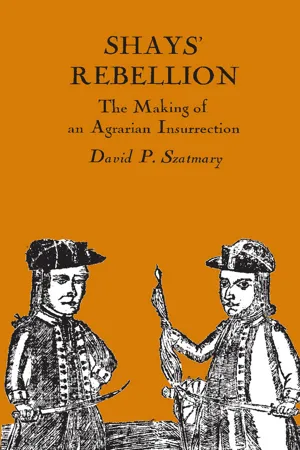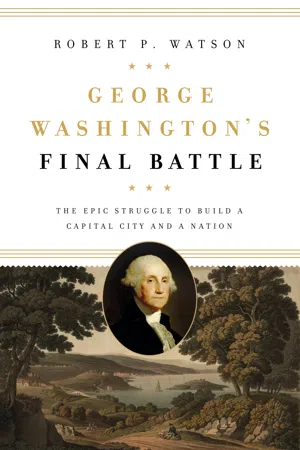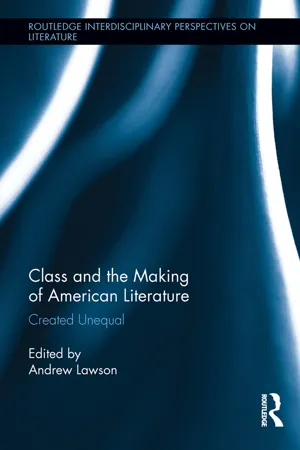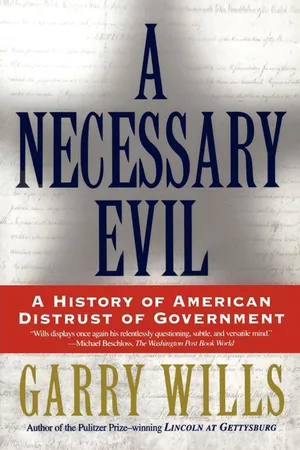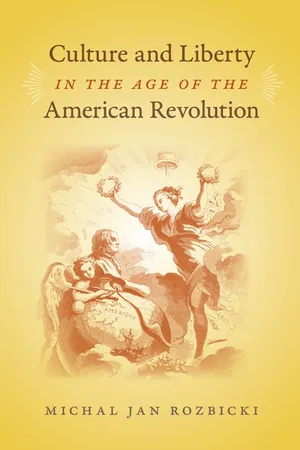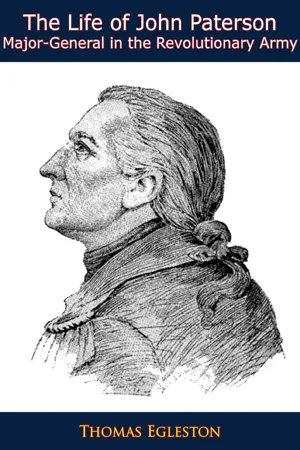History
Shays Rebellion
Shays Rebellion was an armed uprising in Massachusetts in 1786-1787 led by Daniel Shays, a former Revolutionary War captain. The rebellion was a response to high taxes and debt, and the lack of economic relief for farmers. It highlighted the weaknesses of the Articles of Confederation and helped lead to the creation of the United States Constitution.
Written by Perlego with AI-assistance
Related key terms
Related key terms
1 of 4
Related key terms
1 of 3
8 Key excerpts on "Shays Rebellion"
- eBook - ePub
Shays' Rebellion
The Making of an Agrarian Insurrection
- David P. Szatmary(Author)
- 1984(Publication Date)
- University of Massachusetts Press(Publisher)
7Shays’ Rebellion and the ConstitutionTHE UPRISING OF New England farmers in 1786 and 1787 has a historic significance much deeper than that of a regional chronicle. For it is clear that Shays’ Rebellion played an integral part in the genesis and formation of the United States Constitution adopted at Philadelphia in September 1787. The crisis atmosphere engendered by agrarian discontent strengthened the resolve of the nationalists and shocked some reluctant localists into an acceptance of a stronger national government, thereby uniting divergent political elements of commercial society in the country at large.Besides affecting the formation of the Constitution, the Shaysite troubles influenced the ratification debates in New England, and especially in Massachusetts. The ratification contest generally pitted backcountry Antifederalists against merchants, professionals, and urban artisans. Following the pattern of Shaysite resistance to government, Massachusetts antifederalism represented an attempt to save a subsistence-oriented way of life from the penetrating edge of a commercial society. As Van Beck Hall has argued, “the debate over the Constitution, instead of raising the curtain on new divisions that would exist in a new political era, actually climaxed the political struggles of the earlier period.” In both the formation of the Constitution at Philadelphia and the ratification debates in Massachusetts, then, Shays’ Rebellion assumed an important role.1During the 1780s, most state leaders had been oriented toward a commercial society. New England legislators usually gained their livelihoods through merchant or professional enterprises. In the middle states, lawyers such as James Wilson of Pennsylvania and New Jersey’s William Paterson along with such wholesalers as Philadelphia merchants George Clymer and Thomas Mifflin exercised leadership. A few merchants in and around Charleston, South Carolina, lawyers such as North Carolina’s William Davie and John Rutledge of South Carolina, and such plantation owners as Pierce Butler, Charles Pinckney, and Richard Dobbs Spaight of the Carolinas held the reins in the southern states. Together, merchants, professionals, and planters dominated the political life of the United States. - eBook - ePub
- Robert Kumamoto(Author)
- 2014(Publication Date)
- Routledge(Publisher)
11 By then, new governor John Hancock, another hero of the Revolution, had pushed for further anti-insurgent measures, bolstered the state’s army with additional troops, and convinced most neighboring states to discourage Shaysite activity within their borders. Meanwhile, the state had also begun to prosecute hundreds of rebels, issuing several hundred indictments for treason. Hancock, with some exceptions, issued pardons to all. After a series of trials that stretched to October, the courts also handed down 18 death penalties, although only two persons would eventually hang for their crimes. In the end, 4,000 Shaysites eventually accepted offers from the state to disarm, confess, and sign loyalty oaths, the first steps of public atonement.Although Shays’s Rebellion was the most serious and violent challenge to government authority during the Confederation Era, it never relied on the tactics of terror. In a pattern similar to that established by many of the 17th-century civil insurrections, the Shaysites were singularly devoted to attacking their perceived enemy rather than psychologically manipulating the political behavior of wider target audiences through selective or symbolic violence. Aside from the lack of a victim-target differentiation, there were no attempts to propagandize the cause, or any attempt to establish a sense of extralegal authority, given the rebel propensity to dispense with state courts. Regardless, the rebellion had a huge political impact, forcing many citizens to question the effectiveness of government under the Articles of Confederation. Although plans for what would become known as the Constitutional Convention held that May in Philadelphia were already in motion, Shays’s Rebellion is traditionally cited as one of the primary events that confirmed the absolute need to establish a stronger federal government. The Articles of Confederation certainly had its weaknesses and presented myriad problems, but the stark inability of either the state of Massachusetts or the federal government to quell a popular uprising without an investment of private funds exposed to all the vulnerability of a federation composed of semi-autonomous states. Certainly, a standing federal army would discourage and counteract such unlawful impulses. Consequently, those who favored greater centralization of power at the expense of states would win the day in Philadelphia, as the newly adopted Constitution added executive and judicial branches to the greatly empowered legislature. In 1789, George Washington assumed the Office of the Presidency as the nation entered into a new era after an abbreviated false start. The future was uncertain, and many wondered how the new national government would respond to a crisis on the order of Shays’s Rebellion. Unfortunately, they would not wait long for an answer, for a test of the Washington administration’s resolve would come far too quickly. - eBook - ePub
George Washington's Final Battle
The Epic Struggle to Build a Capital City and a Nation
- Robert P. Watson(Author)
- 2021(Publication Date)
- Georgetown University Press(Publisher)
1In the years after the war Shays emerged as a spokesperson for and leader of fellow veterans and struggling farmers in rural western Massachusetts who were angry at perceived economic injustices. It appeared to them that the state’s government was working only on behalf of the more powerful, populous, and prosperous communities along the Eastern Seaboard, not for rural western farmers. The situation was rife with discontent and uncertainty, made all the worse when numerous petitions by the public went unaddressed by the state legislature. Moreover, the situation in western Massachusetts was indicative of the situation across much of rural America at the time.When the state legislature adjourned in August, angry demonstrations began to form throughout the western communities. Protests broke out at courthouses. Soon anger prevailed over civility, and farmers began destroying public property. Threats were made on both sides. Led by Shays, mobs of desperate farmers armed themselves, and the state legislature responded by suspending habeas corpus. Chaos and an armed insurrection threatened not just Massachusetts but areas across the fledgling republic. Samuel Adams, the former firebrand leader of the Sons of Liberty and Boston Tea Party, did not help matters when he suggested that foreign agents might be behind the rebellion. Labeling the mob’s actions treason, he called for putting the insurrectionists to death. In September the state supreme court ordered the arrest of several rebellious citizens. No one stepped forward to de-escalate the mounting crisis.2 - eBook - ePub
Class and the Making of American Literature
Created Unequal
- Andrew Lawson, Andrew Lawson(Authors)
- 2014(Publication Date)
- Routledge(Publisher)
Part IClass in Early American LiteraturePassage contains an image
Ed White1The Shays Rebellion in Literary HistoryGiven its basic, brutal significance—the largest domestic insurrection in U.S. history prior to the Civil War—the so-called Whiskey Rebellion poses something of a puzzle to the cultural historian. In 1794, the rebellion culminated in the paramilitary mobilization of yeomen in Virginia, Maryland, and Kentucky, but mostly western Pennsylvania, with orchestrated crowd actions against tax-collectors and other elite placemen. President Washington called up militia units from neighboring states, at first personally leading the expedition with Alexander Hamilton at his side; with the arrest, intimidation, torture, and interrogation of leaders and participants, the rebellion was put down. And while the executive did not execute any leaders, the suppression weakened plebeian self-organization—already attacked in the form of the Democratic-Republican societies—until the elections of 1800. These logistical facts, sometimes recited in sanitized form in textbooks, obscure the broader class conflict of the moment, buried in details about taxation and credit. In 1790, Treasury Secretary Hamilton had begun advocating a centralized banking system to promote capital accumulation and investment. Crucial to this program was the consolidation of national and state debt, which entailed the payment of debts incurred during the Revolution. The war had been significantly financed by the poor and the middling, who purchased bonds that quickly devalued from wartime inflation; debt speculators had bought much of this debt at a fraction of the original cost. Hamilton’s successful proposal to honor that debt—calculated at some $830,000—ratified a massive transfer of wealth from the working classes to the financial bourgeoisie. This transfer of wealth was, in turn, significantly financed by a tax on distilled spirits—a privileged form of currency among yeomen farmers—that disproportionately hurt small producers. As the best historian of the rebellion has noted, “Hamilton’s whiskey tax didn’t merely redistribute wealth from the many to the few, subdue rural economies, and pound the restless, defiant west,” but in fact “served as one of the heavier cogs in a machine for restructuring all of American life” (Hogeland 69). In some instances, taxation drove “self-employed farmers and artisans into the [distillery] factories of their creditors” (Hogeland 70). This was a massive assault on small agrarian producers as part of a major plan to finance capitalist development, culminating in plebeian self-organization and an armed insurrection against the new Constitution’s first executive administration. - eBook - ePub
A Necessary Evil
A History of American Distrust of Government
- Garry Wills(Author)
- 2013(Publication Date)
- Simon & Schuster(Publisher)
24. Punitive raids (February–June 1787) . The scattered rebels left in Massachusetts took out their frustration by raiding merchants’ homes until order was fully restored. The raids sputtered out, and new elections seemed to promise hope for redress of grievances when the popular John Hancock replaced Bowdoin as governor. Madison feared that the man he called “an idolator of popularity” (M 9.399) would accommodate the rebels. But Hancock surprised friend and foe by raising money for eight hundred more government soldiers. He was supported by the new president of the Massachusetts Senate, Samuel Adams, who had been a radical in the Revolution, but was for harsh reprisals against the western rebels.3 Though both sides would pull back from the abyss that had opened in Massachusetts, fear of western unrest made other states more favorable to the Continental Congress that was assembling at this very moment. The lasting effect of Shays’s Rebellion on American history is to be found in the American Constitution (see Chapter 17).Whiskey Rebellion (1794)
The next major insurrection occurred after the adoption of the Constitution, during Washington’s second term as president—the Whiskey Rebellion of 1794 in the backcountry of Pennsylvania. It, too, was the product of western resentment at economic exploitation, an excise tax on the production of whiskey. Since Alexander Hamilton, as secretary of the Treasury, could not under the new Constitution collect direct taxes from individuals, he had to find products of sufficient scale to bring in a national income from excises. Whiskey was produced in the necessary quantity, and—like snuff, sugar, and gentlemen’s carriages—could be taxed as a “luxury” (as it still is). But for some western farmers, whiskey was a subsistence product. They could not economically send their wheat across the Alleghenies in any but this distilled form. Their protests against the excise had, with the support of President Washington, brought some moderation in its rate and the means of enforcing it. No longer, for instance, would those in default have to travel to federal court in Philadelphia for their trials (one of the most galling provisions of the original law). But those who had been summoned to trial before relaxation of the law were, foolishly, ordered to meet the old conditions. Some later historians blamed this requirement on Hamilton’s desire to stir up trouble and crush resistance. But Thomas Slaughter more plausibly argues that the requirement was a bluff, to enforce readier compliance with the law (the court in Philadelphia was not even sitting at the time when the westerners were supposed to appear before it).4 - eBook - ePub
- Michal Jan Rozbicki(Author)
- 2011(Publication Date)
- University of Virginia Press(Publisher)
HE TWO DECADES FOLLOWING Independence were a laboratory where the Revolutionary conceptual package was tested. The environment had changed; justifying the war and the Patriot cause gave way to the practice of governing. At the same time, various groups began to voice their grievances in terms of the new language of rights popularized by the Revolution. This caused a good deal of friction with the new leaders, who were beginning to have second thoughts about the growing involvement of ordinary people. The tensions soon turned into a struggle over the meaning of new, republican liberty. The upper ranks increasingly worried that “the everlasting flattery of the people as sovereigns” would result in commoners redefining and “democratizing” liberty. They warned that “no counterfeit sense of the people expressed in mob meetings, and dictated by the loudest bawls of the man who happens to rise upon a hogshead, ought to control or prevent the measures of the nation and its government.” This tension inspired first a disillusionment and then a backlash among the political class. Their response was aimed at regaining control over the meaning of liberty, holding back the spread of an egalitarian mentality, and, in cases of insurgency, countering the “spirit of rebellion” contained in the voices of the “usurpers,” who not only had “the insolence to wear badges of their character,” but whose “boldness [wa]s countenanced in many places by popular elections of them to local offices.” This backlash was far from being a case of moral declension or, as we are sometimes told, a betrayal of previously proclaimed values. Instead, it confirmed that there was nothing to betray; the rulers were only defending the logic of freedom tied to a social order they had always accepted as proper.The truly novel story of this period was that of the masses of common people seeking respect and independence by eagerly invoking the principles which the Revolutionary leaders designed for another vision of society—one inspired by classical republics ruled by virtuous elites. George Minot correctly identified this eagerness as “that thirst for freedom which the people have discovered in the late revolution,” even as he expressed fear that it might develop into “an unqualified opposition to authority.”1 The earliest and most prominent dispute about the meaning of the Revolutionary narrative was occasioned by the 1786 Shays's Rebellion in Massachusetts.Most literature on this episode has focused either on the economic conflict involved or on the influence of the event on the shape of the Constitution. At one level, it was certainly a confrontation over economic policy. The state legislature, overwhelmed by public debt, refused to reduce taxes, forcing many farmers into insolvency. Unable to pay debts with hard money, backcountry towns sent moderately phrased petitions to the legislature, which refused to act upon them. Only in response to this inaction did a convention of selectmen from several towns adopt a more dramatic agenda of political demands, including abolishing the upper house and establishing annual elections. They also assembled militiamen, led by former commanders of Revolutionary units like Joel Billings, Joseph Hines, and John Thompson, to block a number of county courts where debt cases were tried.2 - Thomas Egleston(Author)
- 2023(Publication Date)
- Braunfell Books(Publisher)
The political agitation which led to Shays’ Rebellion in Massachusetts began very soon after the close of the Revolution, and for a time threatened not only the entire subversion of law and order in the State, but also the abandonment of some of the great principles which had been regarded as settled by the Revolutionary War. Its complete suppression, however, by the energetic action of the authorities of the State and the support of these principles by a very large majority of the people was fortunate, as it called the attention of the prominent men of every State in the Union to difficulties whose solution caused a careful study of the conditions which rendered the rebellion possible, and undoubtedly hastened not only the acceptance of the Constitution under which we are now living, but also its very careful revision so as to make such occurrences unlikely in the future.Some of the people, exasperated by a condition of things which could hardly have been avoided, lost their judgment, excited their own passions and those of the multitude by public addresses, and sought redress in riot and murder, as if that would right their wrongs. The people of the commonwealth were groaning under burdens and evils of which they imperfectly comprehended the causes and still more imperfectly the remedy. They had some real and more fancied grievances. They had been in a constant state of agitation since the accession of George III. They had now been under arms since 1774. They had been without courts since 1780, and most of the time at war. War and its consequences had become familiar to them, and its rapid methods of justice satisfied them. The State constitution was new, and the Federal not yet adopted. They had not yet learned by experience that under a constitutional government every evil can be removed without resort to arms by patient and peaceable agitation.The principal causes of discontent during Shays’ Rebellion were the universal indebtedness, the difficulty of collecting either principal or interest, the injustice of the law against debtors, the abuse of the debtors’ prison, and the scarcity of money. There was no law for the just distribution of the property of the debtor among his creditors. Executions on property were satisfied in their chronological order until the estate was exhausted. The least suspicion of financial unsoundness was followed by attachments. He who came first got the most; those who came last got nothing. The result was great injustice to both debtor and creditor. The efforts of creditors to collect what was due them were resisted. The decisions of the courts against the debtor were regarded as the cause of the distress, since they gave the creditor legal power against the debtor. Gold and silver had for a long time ceased to be a circulating medium, and were rarely seen. The currency of the country was a mere promise to pay based upon nothing, and had become completely valueless. How far values had fluctuated is shown by the fact that the allowance of two-pence a head for killing old blackbirds had become in May, 1780, thirty shillings; that labor on the highways, which had previously been paid at three shillings a day, had become seven pounds. A dollar in silver, for the collection of taxes, was worth one hundred and twenty in Continental currency. The people were really poor. Those who could had borrowed money at exorbitant rates of interest to pay taxes, and now no ready money could be had. The burden fell heavily both on the State and the people. The State could not relax the taxes; the people could not pay them. Both the law and the customs relating to the collection of debts had been harsh and unjust, and when the war was over there arose a fashion about them which made them unbearable. The people knew that they were carrying heavy burdens, and they could find neither the cause nor the remedy. They had fought for eight years to get redress from oppressions much more easily borne, and which in comparison to those they were now bearing seemed trifling. It appeared to some as if the whole war had been fought only to settle a theoretical principle, and many of them, if it would have brought redress, would have willingly gone back to “the king and all the royal family.” The State was as badly off as the citizen. He saw no way out of the situation, for his quota of the national. State, county, and town debt was all incurred in the defense of his liberty and was binding upon him. Besides his obligations to the State he had his own private indebtedness. The principal was piling up, and in addition the interest on the portion not paid was accumulating, as he could pay neither the one nor the other.- eBook - ePub
Jeffersonian America
The Founders and America's Future
- Robert M. S. McDonald, Peter S. Onuf, Robert M. S. McDonald, Peter S. Onuf(Authors)
- 2021(Publication Date)
- University of Virginia Press(Publisher)
18No less a figure than Alexander Hamilton used the specter of Shays’s Rebellion in the Federalist Papers to advocate for a centralized federal republic, with a standing army capable of suppressing “actual insurrections and rebellions.” Then as secretary of the treasury, he composed his report on public credit that led to the assumption plan, a national debt combining state and national securities, funded indefinitely by excise and customs duties, and the creation of the Bank of the United States to manage it all. Popular resistance to the “Funding System’s” incursions on liberty was as immediate as Thomas Jefferson’s opposition in the cabinet as national parties began to emerge.19A representative body of six Upper Ohio counties of Pennsylvania and Virginia, meeting at Parkinson’s Ferry in August 1794, charged that “the taking of citizens of the United States from their respective vicinage, to be tried for real or supposed offenses, is a violation of the rights of citizens, is a dangerous and forced construction of the Constitution, and ought not under any pretense whatever, to be exercised by the judicial authority.”20 They were protesting warrants for excise violators returnable to Philadelphia, hundreds of miles away. At a 1794 liberty pole in Northumberland County, a Pennsylvanian named “Stockman” said, “The Excise Law was dangerous and oppressive & permitting [it] to exist would be the cause of other taxes, more oppression.” The Congress who passed it were “a lot of Damned Rascals,” and “he told them there was a regular mode of redress by the constitution. . . . They had petitioned but could get no redress, that they would have a land tax & then all would be regular.” Before erecting the pole, the crowd procured “silk for the flag” on which “they put Liberty, Equality of Rights, a Change of Ministry, and No Excise.” When challenged on the “Change of Ministry” slogan aimed at George Washington, one participant said that “the President might kiss his backside.” Like their Massachusetts counterparts to the north, western Pennsylvanians were still in pursuit of liberty after the Revolution, even after the adoption of the federal Constitution. For them, as for the Shaysites, taxes were but one threat among many to their liberty.21
Index pages curate the most relevant extracts from our library of academic textbooks. They’ve been created using an in-house natural language model (NLM), each adding context and meaning to key research topics.
Explore more topic indexes
Explore more topic indexes
1 of 6
Explore more topic indexes
1 of 4
